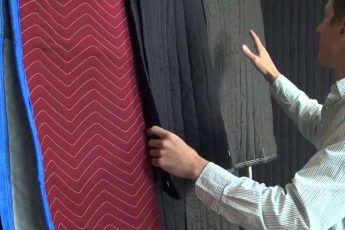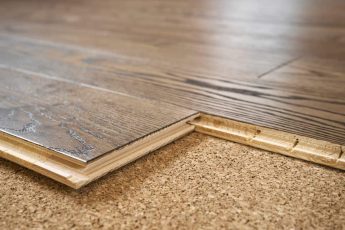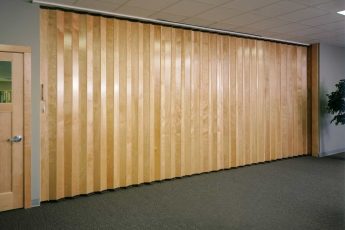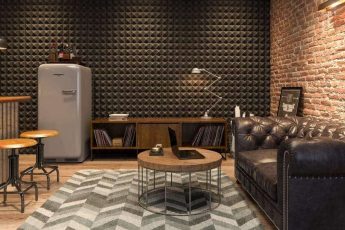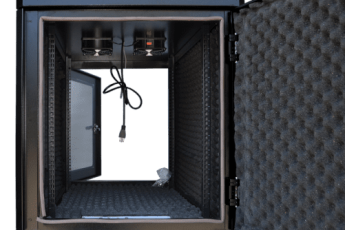If you don’t have the money to construct a new ceiling, you can easily soundproof your ceiling with drywall. You need to use two or three sheets of drywall for the best results. If you have a low ceiling, you can also use OSB or plywood as a base layer.
Dropped ceilings
If you want to soundproof your drop ceilings without construction, there are several ways to do so. First, you must determine the height of your original ceiling. This will give you an idea of the height of the new soundproofing material. Then, you should cut the mineral wool or vinyl barrier to the same size as the existing ceiling tile. This will leave a 1/4-inch gap between the new material and the original ceiling, which will allow for sound transmission absorption.
Another option is to use drop panel systems. Drop panels are often a good option because they prevent sounds from reverberating throughout a room. However, they have several disadvantages. First, it can be difficult to remove panels. Furthermore, they can be damaged during the process. Second, it can be difficult to find replacement panels. Luckily, there are now inexpensive methods to eliminate the need for this option.
Fiberglass insulation is another solution for soundproofing. It can absorb airborne noise and block the loss of heated and cooled air. This is a great solution for acoustics, but only when the ceiling is made of fiberglass. The insulation will not work as well for drop ceilings because the latter contain structural elements. You can also use acoustic tiles to soundproof drywall. These tiles are made of fiberglass and some of them come with sound-interrupting foil.
Another option is to treat the floor above the ceiling. However, this may not be possible if the floor belongs to someone else. If you do not own the building, you can gift heavy rugs to your noisy neighbors or purchase an inexpensive acoustic material.
Acoustic foam
Using acoustic foam on the ceiling is an inexpensive and easy way to soundproof a ceiling without construction. It works just like acoustic tiles but is easier to install. However, it is not as aesthetically pleasing as tiles. You can purchase it in sheets or panels and attach them to the ceiling with construction adhesive or finishing nails.
Acoustic foam works by absorbing sound energy. The material is designed to block low-frequency sounds. High-frequency sound energy will be absorbed better by different materials. Generally, a combination of different materials with varying mass is better than a single material with a higher density. It is also necessary to decouple the existing structure for soundproofing purposes, since connecting to the existing wall or ceiling will not be able to block the vibration.
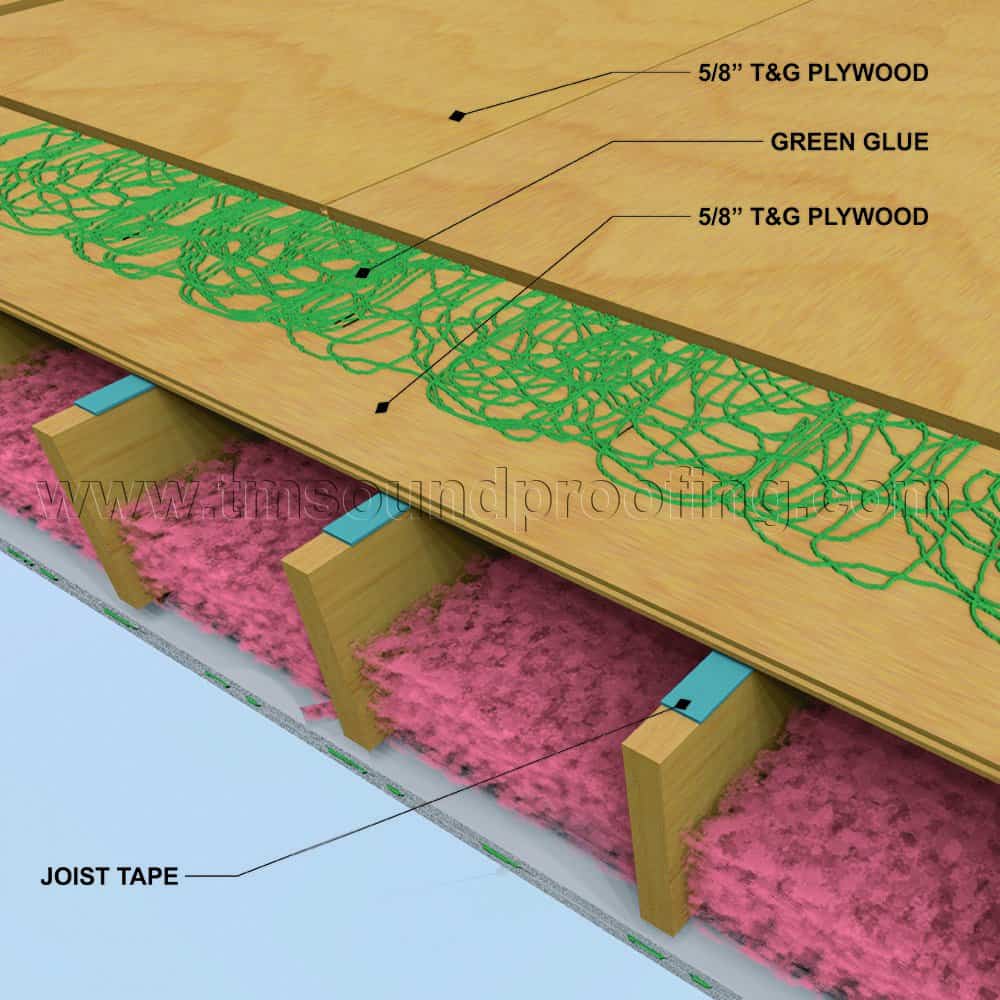
A parquet floor is another way to soundproof a ceiling. If you do not want to replace the floor, you can install two layers of wood with a thin mat in between. This way, you can reduce reverberation and reduce the sound from outside. Alternatively, you can use acoustic ceiling tiles.
If you want to soundproof a ceiling without construction, you can also apply acoustic foam to the ceiling. The material is made up of acoustic foam, which is a porous material. As a result, sound is absorbed inside the room but not reflected from it. This can be a great way to reduce noise in a room without the expense of construction.
You can also use acoustic foam panels on the walls and ceiling to block sound. These panels are available in different thicknesses and come in a variety of shapes and sizes.
Drywall
Soundproofing ceilings is difficult to accomplish without construction, but it is possible to make your ceilings soundproof. Adding additional layers of drywall and insulation can do the trick. Alternatively, you can construct a dropped ceiling. This option is much more straightforward than building a new frame and adding insulation.
Adding hat channels, or mass-loaded vinyl, can be an effective way to soundproof a ceiling without construction. It is important to make sure that the hat channels are not attached directly to the ceiling joists, as this will allow sound to travel back and forth between floors.
Installing soundproofing paint is another good option. However, you should apply at least three coats. If you use one coat, it will not do much. It is also important to follow proper application instructions. You should use a high-quality paint and avoid using ordinary paint.
Another soundproofing option is resilient channels. These metal strips come in different lengths and can be cut to fit the ceiling. They work by dampening sound traveling through drywall joints. They are best for areas with limited space above or below the ceiling and when drilling holes is not an option. However, resilient channels usually require extra support to hold up and prevent vibrations from traveling through them. You can purchase resilient channels at most drywall suppliers and some home centers.
Another option for soundproofing a ceiling without construction is to use soft materials. Hanging blankets, curtains, and paintings can reduce noise in a room. You can also consider installing self-adhesive foam wallpaper on walls to soften the feel of a room. It looks like brick walls and is especially effective for rooms with small children. You can purchase these types of wallpapers from an online retailer.

Insulation
If you’re looking to add insulation to your house without the hassle of building a new structure, you should look into installing ceiling insulation. Fortunately, this can be accomplished on most houses. You can even do it yourself in areas where you can get at it, or you can hire a contractor to help you with the project. The amount of energy you save will depend on several factors, including the climate of your area, the shape and size of your house, the heating and cooling systems, and the type of fuel you use.
You should choose a type of insulation that is rated in terms of its thermal resistance. This is called its R-value, and the higher the number, the better. In addition, you should consider how the insulation is installed, as this can impact its effectiveness. It’s best to go with a company that has experience installing the material you’re considering.
If you can’t do this yourself, you can use prefabricated insulated panels. These panels fit together and provide better insulation than traditional methods. They can also save you a lot of money. Besides saving on labor costs, SIPs also take less time to build. By using these panels, you can expect your home to be more comfortable, quieter, and more energy efficient.
If you are interested in building a new home, you should consider the cost of the insulation. This will depend on your personal finances. Remember, however, that your initial investment will pay for itself over time with the lower electrical and fuel bills. Additionally, you may be able to get a higher loan amount from your bank if you make your home more energy efficient.
Resilient channel
The use of a resilient channel can greatly enhance the soundproofing and impact isolation properties of floor partitions and ceilings without construction. While installing the channel, take care not to screw it against the walls or other surfaces. This can lead to sagging and alignment issues.
The resilient channel is best installed at right angles to the framing members. Ideally, the channel will extend at least 610 mm (24 in) from the framing members. If you do not have the time to install the channel, you can also use a 13-mm wallboard at the floor. If the resilient channel overlaps the framing members, you must splice the ends together. To do this, nest the ends of the channel over the framing members so that the pre-punched holes are aligned.
Another disadvantage of using resilient channels is that they are extremely thin and are vulnerable to damage during transportation and on-site storage. Even the slightest bend in the channel could shorten and cause the assembly to fail. This is especially dangerous when the RC channels are attached too close to each other. This results in an inadequately sound-insulated wall and a compromised STC value.
Soundproofing is a very labor-intensive process, so it is best to do one room at a time. Depending on your needs, you may decide to do it yourself, either for a single room or a large multi-room structure. To get the best results, choose the sound-proofing method based on the size of your space. For example, if you want to use the soundproofing method for a home theater or home office, you should use a resilient channel. The resilient channel is available in many home centers and drywall suppliers.

The resilient channels should be secured to the joists at the right angles. Make sure that you do not fasten the joists with nails. In addition, you should not fasten the resilient channel to the ceiling.

